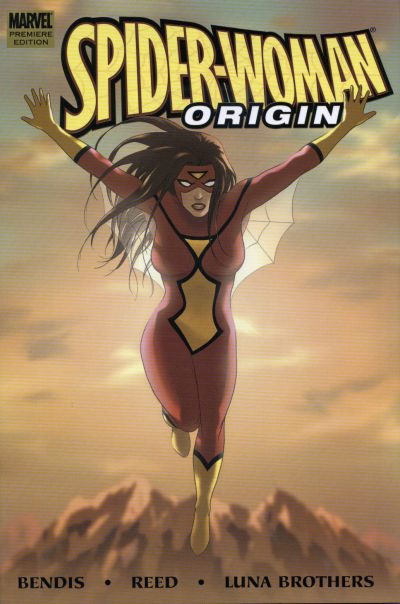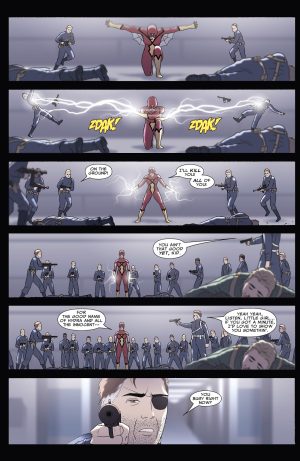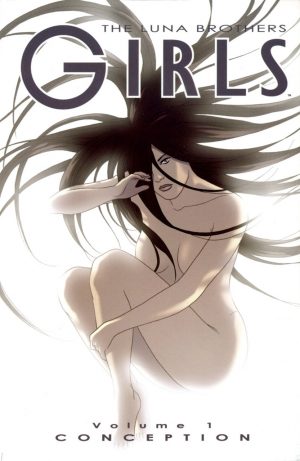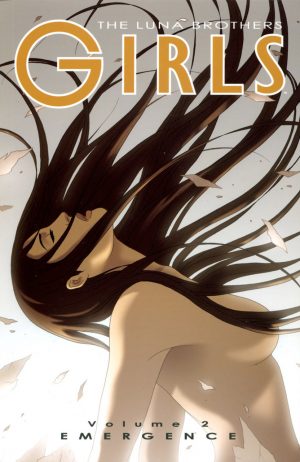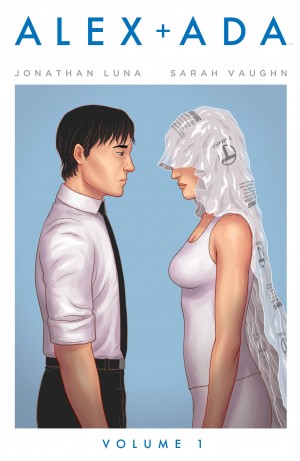Review by Frank Plowright
When Brian Michael Bendis reconfigured the Avengers in 2005 Spider-Woman was inducted into the team, indicating a fondness for the character on his part. Although the identity had been passed to others, the Jessica Drew version of Spider-Woman had been relegated to obscurity, so this re-examination of her origin followed soon after her Avengers membership.
Spider-Woman came into being when Marvel realised that someone might attempt to exploit the popularity of Spider-Man and thought they’d better trademark the name and property first. The result was a one-shot in which she was revealed to have been one of the High Evolutionary’s experiments and evolved from a spider. When she progressed into her own series that origin was revised, and it’s the second version that Bendis and Brian Reed expand on.
We’re introduced to Jonathan and Miriam Drew, both scientists whose experiments on spiders in the Wundagore region have been funded by an army general, but an accident occurs affecting the baby Miriam is carrying. Ten years later young Jessica has an affinity for spiders, and when panicked is able to fire a venom blast from her hands, but the incident leaves her in a coma for seven years. When she awakes she’s housed by global terrorists Hydra, who proceed to influence her, casting themselves as freedom fighters.
Joshua Luna supplies the layouts, while Jonathan Luna handles the actual drawing and colouring, and the results are mixed. Superficially it’s a simple and attractive style, but look closely at faces, Nick Fury in particular, and they’re too simple. Luna can handle people having conversations, but any action is stiff, and the brightly coloured panels resemble stills from 1980s animation. What were possibly in 2007 state of the art digital blurring effects now look dated.
There’s no breakdown for the writing credits, so who’s responsible for what isn’t clear, but the further Bendis and Reed depart from the original story, the better Origin becomes, although despite a few nice touches it’s never special. Jumps ahead in time are used several times, showing Jessica at various stages of her life, and the good portrayal of Fury compensates for the unconvincing version of Jessica’s father, which is no improvement on the original version. Neither is the introduction of sordid undertones a step forward. Readers also need to be familiar with the original story to make sense of scenes of Jessica seeing her childhood housekeeper as a cow, as the explanation supplied doesn’t convince.
Spider-Woman’s origin is likely to be provided in contacted form in any series Jessica Drew stars in, and anything published since Origin is likely to be better.
